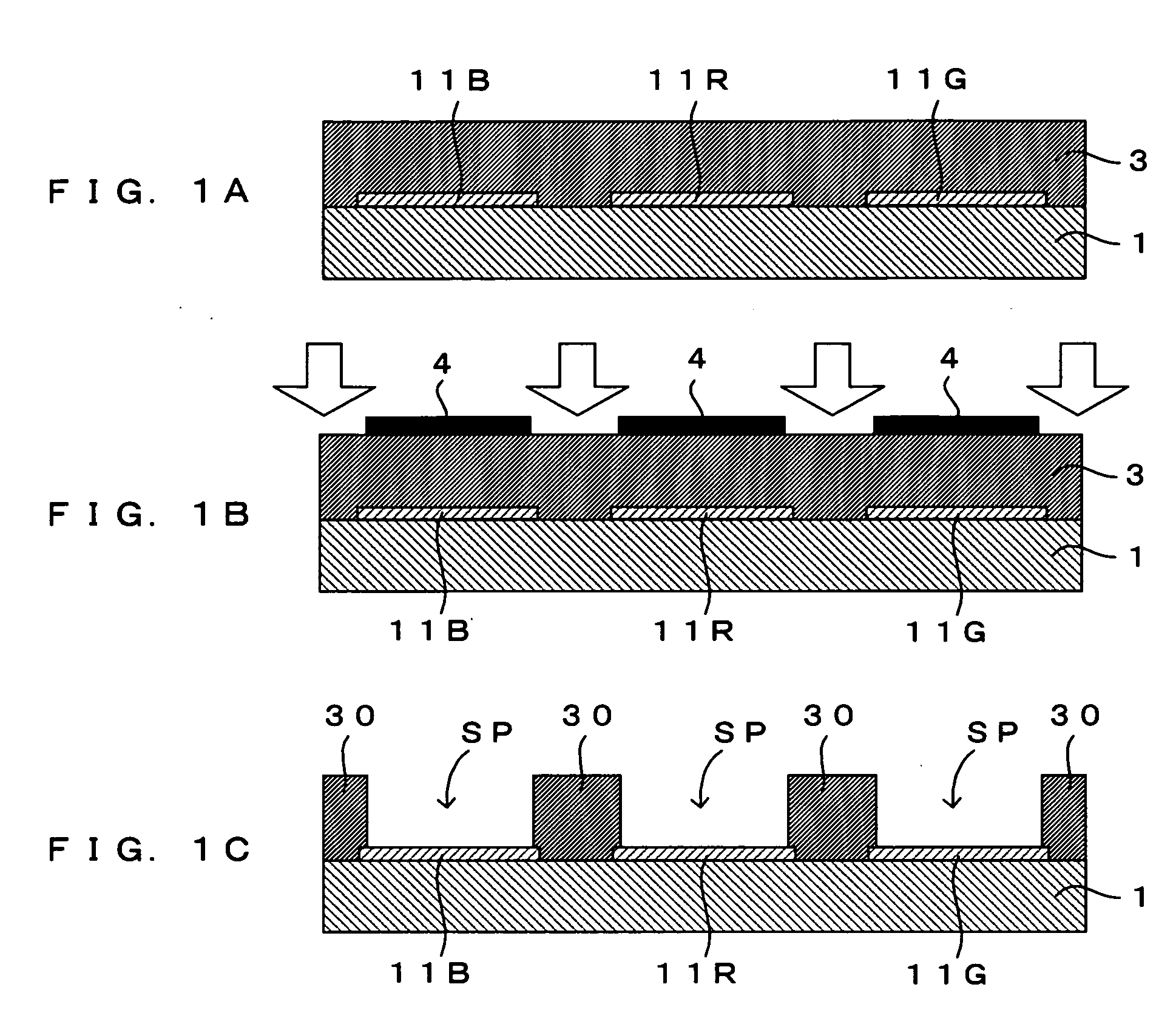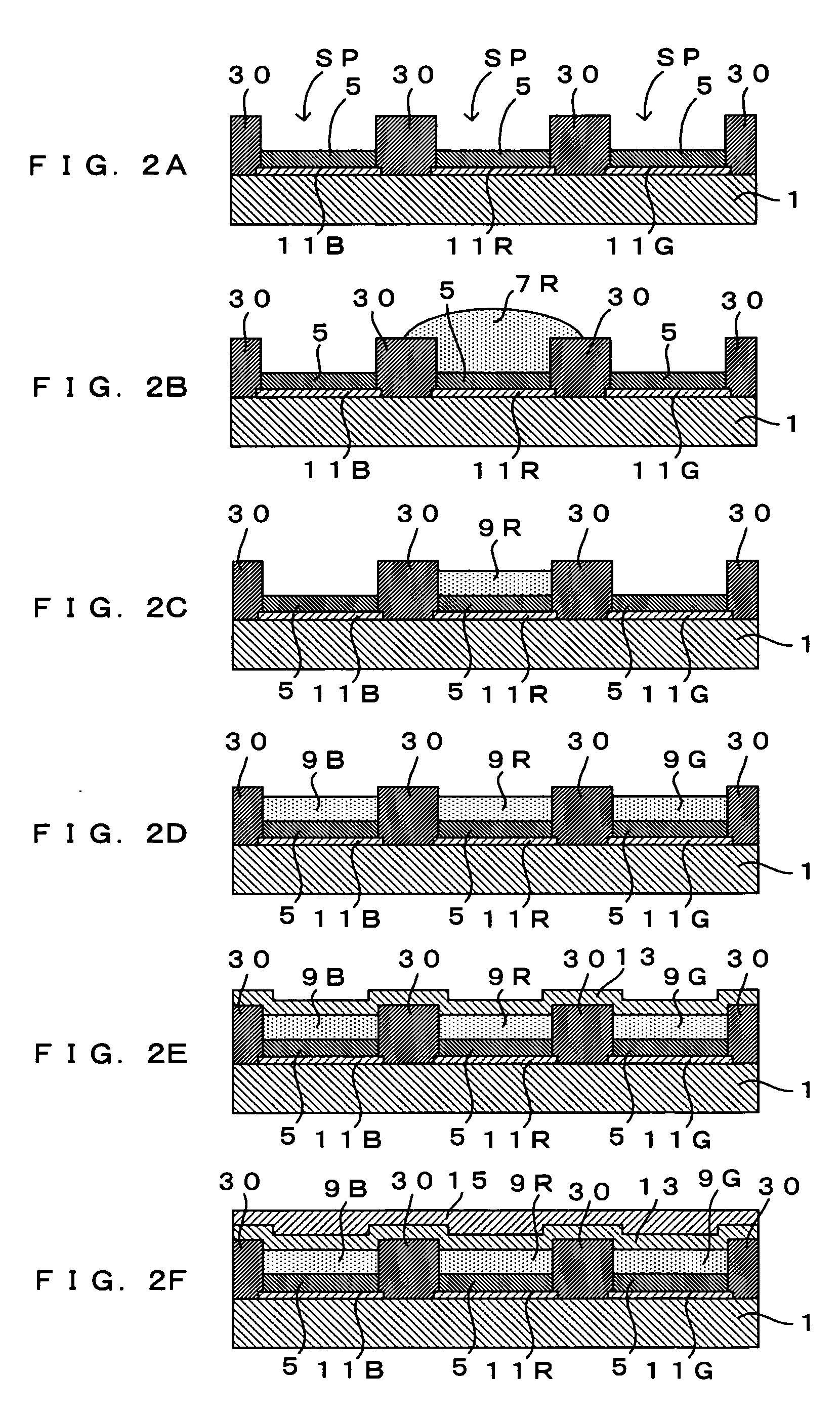Substrate for organic EL and method for manufacturing the same
a technology of organic el and substrate, which is applied in the direction of discharge tube/lamp details, discharge tube luminescnet screen, transportation and packaging, etc., can solve the problems of ineffective means of making banks, inability to develop plasma inside the vacuum chamber, and inability to achieve plasma treatment inside the vacuum chamber
- Summary
- Abstract
- Description
- Claims
- Application Information
AI Technical Summary
Benefits of technology
Problems solved by technology
Method used
Image
Examples
first embodiment
[0020]FIGS. 1A through 1C are drawings which show a first embodiment of a method of manufacturing a substrate for organic EL of the invention. In this embodiment, first, by a coating method such as spin coating, an oil repellent photosensitive material which will become a bank (barrier wall) material which will be described later is applied upon a substrate 1 which first electrodes 11R, 11G and 11B are formed by patterning on the surface as shown in FIG. IA (coating step). This forms an oil repellent photosensitive material layer 3 on the substrate 1. The first electrodes 11R, 11G and 11B are obtained by patterning an ITO (indium tin oxide) film into plural stripes for instance, and correspond to anodes. To secure emission of light (luminescence from organic EL layers which will be described later) from the back surface (bottom surface) side of the substrate, a glass substrate, a transparent plastic substrate or the like is used as the substrate 1, and the first electrodes 11R, 11G ...
second embodiment
[0034]FIGS. 3A through 3D are drawings which show a second embodiment of the method of manufacturing a substrate for organic EL of the invention. A major difference of the second embodiment from the first embodiment is that the banks have a double-layer structure, that is, top layer parts of the banks are made of an oil repellent photosensitive material and bottom layer parts of the banks are made of a non-liquid repellent photosensitive material. The second embodiment is otherwise similar in structure and operation to the first embodiment. The difference will therefore be mainly described below.
[0035] First, as shown in FIG. 3A, the substrate 1 which the first electrodes 11R, 11G and 11B are patterned on the surface is coated with a non-oil repellent photosensitive material (first coating step). In consequence, a non-oil repellent photosensitive material layer 2 which will become bottom layer films is formed on the substrate 1. The non-oil repellent photosensitive material may be ...
PUM
 Login to View More
Login to View More Abstract
Description
Claims
Application Information
 Login to View More
Login to View More - R&D
- Intellectual Property
- Life Sciences
- Materials
- Tech Scout
- Unparalleled Data Quality
- Higher Quality Content
- 60% Fewer Hallucinations
Browse by: Latest US Patents, China's latest patents, Technical Efficacy Thesaurus, Application Domain, Technology Topic, Popular Technical Reports.
© 2025 PatSnap. All rights reserved.Legal|Privacy policy|Modern Slavery Act Transparency Statement|Sitemap|About US| Contact US: help@patsnap.com



